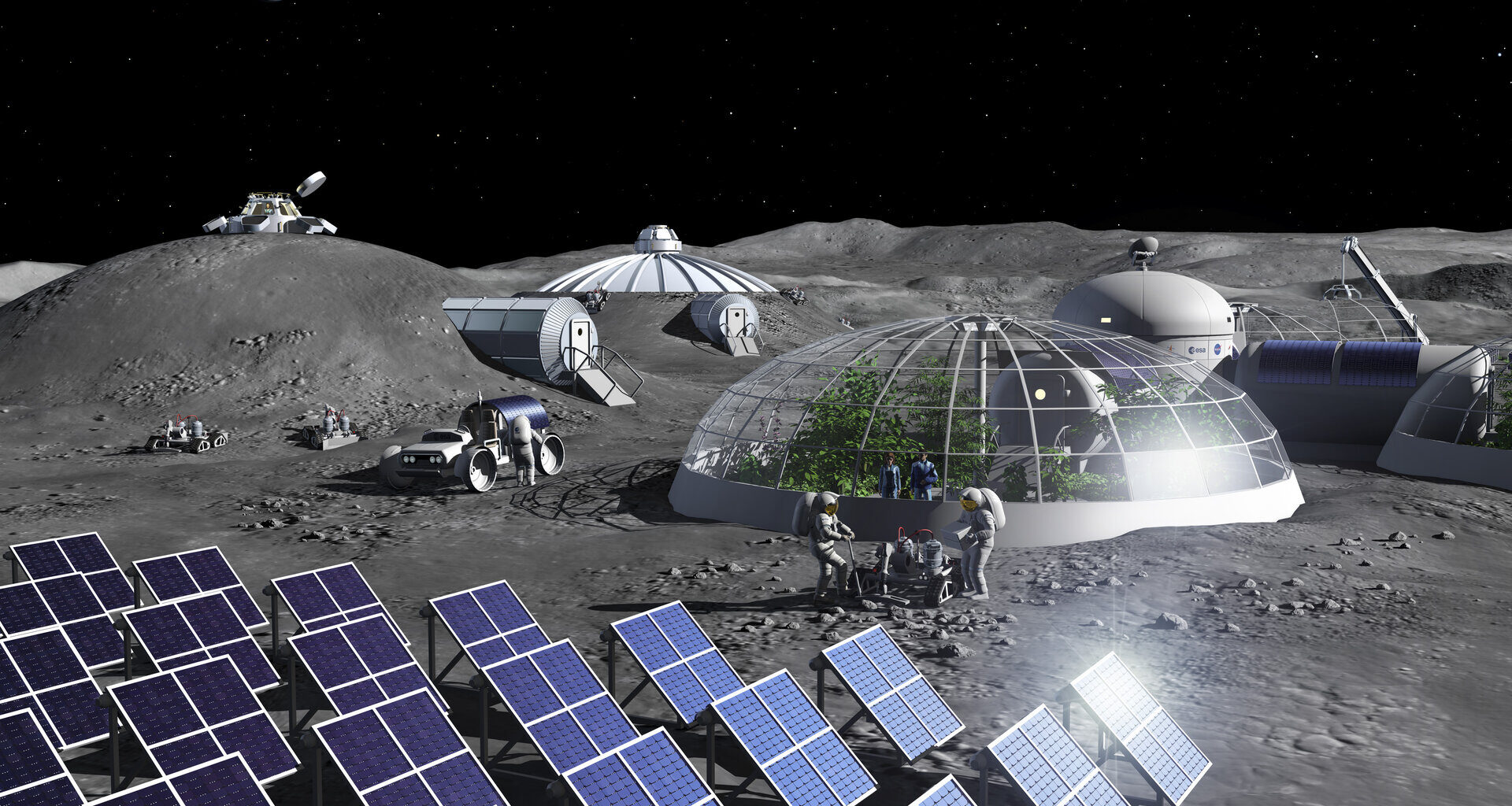Enabling & Support
10/11/2025
3 views
0 likes
To sustain a human presence on the Moon or Mars, we need to develop technologies that can use local resources like water to produce oxygen and hydrogen that can be used as fuels and for life support. On Earth, electrolysis can split water into these essential gases, but our current technology is too energy-intensive and prone to failure for reliable use in space missions. A recent project, co-funded by ESA Discovery, investigated whether fabricating water-splitting catalysts in microgravity could provide a more efficient solution.
The project, ‘Synthesis of nanocatalysts for solar energy conversion in reduced gravitational environments‘ focused on photoelectrochemical systems – devices that combine solar energy capture with electrolysis to split water directly using sunlight – and was carried out by researchers at the University of Bremen. Their work tackles the fundamental challenge of how we learn to live sustainably beyond Earth, exploring whether the unique conditions of space itself could help us manufacture better materials for survival.
Tackling the electrolysis problem
Electrolysis – using electricity to split water molecules into hydrogen and oxygen – is a well-established process, but it faces a persistent problem in space applications. As the gases form during the reaction, they create bubbles on the catalyst surface that act as insulators. “The first layer of bubbles created during the electrolysis process are acting as an insulator, impeding the process”, explains ESA’s Sebastien Vincent-Bonnieu “Each time you perform it, at the beginning everything works well, but then you create a bubble layer, and it doesn’t work anymore.”
The Bremen team’s approach tackles this problem with innovative nanostructured surface designs – surfaces engineered at the molecular level with features thousands of times smaller than the width of a human hair. Rather than trying to prevent bubble formation, their system creates precisely engineered geometries that allow gas bubbles to form and detach continuously from specific points on the catalyst surface. This prevents the insulating bubble layer from building up, enabling the electrolysis process to run indefinitely rather than stopping after the initial gas formation.
Making Better Catalysts in Microgravity
Solar Nanocatalysts for Renewable Energy
The nanostructured surfaces act as catalysts – materials that speed up chemical reactions without being consumed in the process. In electrolysis, the catalyst’s job is to facilitate the splitting of water molecules, and the more surface area available for reactions, the more efficient the process becomes.
This is where microgravity offers a unique advantage. When nanoparticles form in the absence of gravity, they can achieve higher surface-to-bulk ratios and superior crystallinity compared to those made on Earth. The Bremen team used a process called photoelectrodeposition – using sunlight to grow nanoparticles from chemical precursors directly onto semiconductor surfaces – to create these catalysts in microgravity conditions using facilities like the Bremen Drop Tower.
“During the deposition process, the material starts as a solid and experiences a change of phase. On the ground, gravity enables immediate deposition, but in microgravity the only process that can make things stick together is the chemical bond,” explains Prof. Katharina Brinkert from the University of Bremen. “Microgravity tests help us to understand the process, but we also want to make it work under those space conditions so that we can launch it on a spacecraft.”
From research to reality
The microgravity tests have shown promising results – the catalyst materials that were developed are at least as active as the terrestrially synthesised ones.
The technology’s potential extends beyond space exploration. “This technology can be used on Earth first and then brought into space. Furthermore, photoelectrodeposition principle for nanomaterial synthesis and surface functionalisation could also help in other applications” explains Vincent-Bonnieu. More efficient electrolysis systems could significantly improve hydrogen production and energy storage on Earth, contributing to renewable energy efforts before eventually supporting space missions.
For future lunar and Mars exploration, the vision is ambitious: solar panel-like devices that directly convert sunlight and locally sourced water into the oxygen and fuel needed for human survival. Such systems would represent a crucial step towards the sustainable space exploration that missions to other worlds will require – where the resources needed to sustain human life can be produced locally rather than shipped from Earth.
The project originated through ESA’s Open Space Innovation Platform and was co-funded by the Discovery element of ESA’s Basic Activities, representing a step towards the autonomous operations capability that future lunar and planetary exploration will require.
Like

